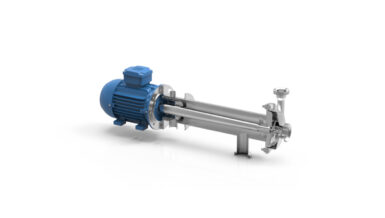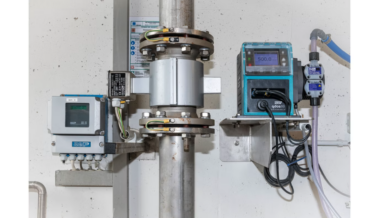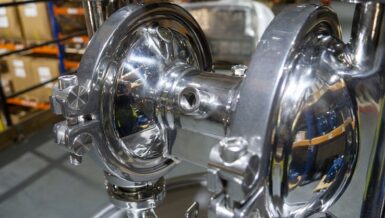Darren Martin, Global Product Line Manager for HMD Kontro Sealless Pumps, the pioneers of magnetic drive pump technology, explains why specifiers should give sealless pumps a second look for chemical processes.
Pump Safety
Conventional mechanical seal pumps have been used by the chemicals industry for many years, offering a low unit cost and the reassurance of familiar products, with common designs across different manufacturers and product ranges. To an extent, most of these pumps are designed to leak, in fact some form of leakage is essential for the seals to operate. Whichever seal system is chosen, this introduces an inherent risk: if the seal fails, the product being pumped could be released into the atmosphere. In fact, up to 85% of unexpected pump failures can be attributed to issues with mechanical seals.
For complex operations involving the transfer of highly toxic or corrosive materials, with different ingredients being mixed, managing risk is an exceptionally important issue, with substances likely to harm plant employees or cause environmental damage if released. With the increasing stringency of environmental legislation and a tightening of international safety standards, breaches can also result in a failure in legal compliance. From an operational standpoint, any disruption of production can incur unexpected costs, with potentially damaging financial implications where the loss of high value product or business continuity are involved.
The basic principle of magnetic drive centrifugal sealless pumps is that the internal pump shaft and support journal bearings rotate within the process fluid. This shaft is supported by internal plain bearings located in a rigid holder. The shaft has an inner magnet ring connected to one end and the impeller at the other. The shaft and bearing holder are inside a can or containment shell that completely contains the process fluid and is rated for the same process conditions as the pump casing in which the impeller is located.
Risk Mitigation
Part of the reluctance of risk averse specifiers with long memories can be down to a few early historical failures. However, new technologies and materials have long since been applied to perfect magnetic drive sealless pump technology addressing these issues.
A key concern with early iterations was centred around the eddy currents that are induced in the stationary metallic containment shells because of the magnetic field rotating around it. This presented an attendant risk of flashing heat sensitive process liquids and disrupting bearing lubrication. Modern sealless pumps offer the option of a non-metallic containment shell to prevent this type of heating and mitigate induction losses. This type of pump is particularly suited for use with chemicals that are toxic, pungent, corrosive, extremely hot or cold or are especially hazardous.
The introduction of instrumentation to prevent dry running, which can adversely affect bearings if undetected, has also helped encourage the move to sealless pumps, HMD Kontro’s patented VapourView technology, for example, ultrasonically detects the presence of gas in a liquid stream from outside the confines of the pump pressure boundary.

The latest sealless pumps also offer a solution to more recent regulations mandated under ASME and ISO standards which require the option of a secondary control or containment system. Compliance can easily be achieved with the inclusion of a leakage restriction / containing device on the motor shaft (close coupled) or drive shaft (long coupled).
A Cost-Effective Proposition
Capital expenditure is an obvious consideration when planning a new installation or upgrading and replacing pump systems. With sealless pumps perceived as more costly due to their upfront cost, specifiers have in the past gravitated towards conventional pumps. However, when evaluated on a whole life basis, sealless pumps have much to offer, with the potential to reduce ongoing maintenance and servicing costs considerably, making for a much lower total life cost.
With fewer working parts and no associated mechanical seal support systems, the magnetic drive design is easier not only to install but also to maintain. Reducing the risk of dry running for bearings also helps extend pump working life. The modular design of HMD Kontro’s newest CSA/CSI range of pumps is an example of how manufacturers are addressing user concerns. Maximum interchangeability of parts and standardised components enables the number and size of different pumps to be reduced and so helps minimise spares holding requirements. A simplified design which eliminates hot working means servicing and maintenance can be carried out on site without the need to access outside services.
Energy efficiency is increasingly an issue, both from the point of view of running costs and sustainability. Another barrier to the adoption of sealless pumps is the perception they use more energy and are more costly to run. In fact, sealless pumps now offer high efficiencies delivering a low energy solution. The elimination of heat generation in the latest containment shells developed by HMD Kontro, for example, also enables smaller motors to be specified, with a 20% reduction in power consumption.
Choosing the right pump is essential to build in longevity and compliance. Having perfected the technology, sealless pumps now offer an attractive replacement or upgrade option that is definitely worth a second look.

































